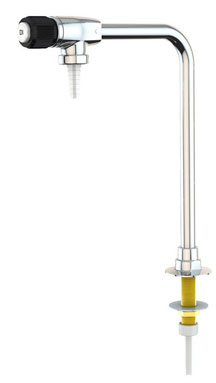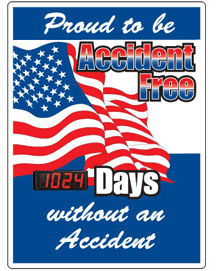OSHA requires SDS's ONLY for materials that a) meet OSHA's definition of hazardous and b) are "known to be present in the workplace in such a manner that employees may be exposed under normal conditions of use or in a foreseeable emergency".
THE FOLLOWING ITEMS **MAY** BE EXEMPTED Hazard Communication Standard 29 CFR 1910.1200 (OSHA wording is in green). If a material is hazardous and not listed below, then it generally requires an SDS:
Exempt: Articles
An "article" means a manufactured item: (1) which is formed to a specific shape or design during manufacture (2) which has end use function(s) dependent in whole or in part upon its shape or design during end use; and (3) which does not release, or otherwise result in exposure to, a hazardous chemical under normal conditions of use. Any product which meets the definition of an "article," would be exempt from the requirements of the Standard.
For example, a roll of copper electrical wire sold to a hardware store would fit this definition of an article and would not require an SDS. However, a load of copper ingots being shipped to a computer chip manufacturer would not meet the definition of an article and would require an SDS.
The definition has been amended to permit the release of "very small quantities, e.g., minute or trace amounts" of a hazardous chemical and still qualify as an article provided that a physical or health risk is not posed to the employees (59 F.R. 6146). In evaluating an article, one must consider the health risk which exposure to that article presents. (The term "risk" as opposed to "hazard" is used here, since the hazard is an inherent property of the chemical and exists no matter the quantity of exposure. To be exempted as an article, exposure must not pose a risk to employee health.)
Note that OSHA cannot make an across-the-board determination of a products' exclusion as an "article." The standard's definition by its very wording imposes the need to make case-by-case evaluations. Consequently, a blanket exemption for specific products cannot be given by OSHA.
Exempt: Food, Food additives (colors, flavors, fragrances), Alcoholic Beverages
Food and food products are...not totally exempt from coverage under the provisions of the HCS.
Exempt items generally include food or alcoholic beverages which are sold, used, or prepared in a retail establishment (such as a grocery store, restaurant, or drinking place), and foods intended for personal consumption by employees while in the workplace.
HOWEVER: if, under normal conditions of use, [the] product could result in a hazardous exposure situation for downstream employees who will be working with or otherwise handling that product then an SDS is required. For example, flour dust poses an explosion hazard and would require an SDS.
Exempt: Cosmetics
Cosmetics which are packaged for sale to consumers in a retail establishment, and cosmetics intended for personal consumption by employees while in the workplace are generally exempt.
Therefore, your supermarket doesn't need SDS's if they sell prepackaged cosmetics, but your local beauty salon (which uses these occupationally) or a cosmetic manufacturing plant would require SDS's.
Note: The US Food and Drug Administration (FDA) has very little oversight over cosmetics. See FDA Authority Over Cosmetics: How Cosmetics Are Not FDA-Approved, but Are FDA-Regulated at the US FDA. Also see this New York Times article from August 7, 2017, For Cosmetics, Let the Buyer Beware.
Exempt: Drugs and Pharmaceuticals
Drugs regulated by the U.S. Food and Drug Administration (FDA) are covered by the HCS. However, section (b)(6)(vii) of the HCS exempts FDA drugs when in solid final form, such as tablets or pills, for direct administration to the patient.
That section exempts any drug, as that term is defined in the Federal Food, Drug, and Cosmetic Act (21 U.S.C. 301 et seq.), when it is:
- in solid, final form for direct administration to the patient (e.g., tablets or pills)
- drugs which are packaged by the chemical manufacturer for sale to consumers in a retail establishment (e.g., over-the-counter drugs)
- drugs intended for personal consumption by employees while in the workplace (e.g., first aid supplies)
Examples of those needing SDS's for drugs would include pill manufacturing facilities and pharmacies (if the drug is compounded, crushed etc.).
Note: Remember that SDS's are not meant for consumers. Given the likelihood of patient confusion, most drug companies do not make their SDS's freely available to the general public. SDS's for drugs are the most difficult to find on the Internet and usually require direct contact with the manufacturer.
Exempt: Hazardous Wastes and Remediation
The HazCom standard does not apply to
Tip: Be certain that you properly label and account for your waste materials. For example, a bottle labeled "Used paint thinner" would still require an SDS, but once you call it "Hazardous Waste" it Officially becomes waste and subject to waste regulations such as the RCRA.
Exempt: Tobacco and tobacco products
The HazCom standard does not apply to tobacco and tobacco products. Therefore, these do not generally require SDS's.
Tobacco and safety are mutually exclusive anyway...
We have no further information concerning the HazCom standard and tobacco. Please contact us if you can enlighten us.
Exempt: Wood and lumber
The standard does not apply to wood or wood products, including lumber which will not be processed, where the chemical manufacturer or importer can establish that the only hazard they pose to employees is the potential for flammability or combustibility (wood or wood products which have been treated with a hazardous chemical covered by this standard, and wood which may be subsequently sawed or cut, generating dust, are not exempted)
Hardwood dusts pose a carcinogenic hazard. Likewise, wood preservatives such as chromium copper arsenate (CCA) also pose hazards. In each case, an SDS is required.
For comprehensive information about wood dusts in the workplace, see OSHA's Wood Dust Information Page.
Exempt: Consumer Products
The HCS exempts any consumer product or hazardous substance, as those terms are defined in the Consumer Product Safety Act (15 U.S.C. 2051 et seq.) and Federal Hazardous Substances Act (15 U.S.C. 1261 et seq.) respectively, where the employer can show that it is used in the workplace for the purpose intended by the chemical manufacturer or importer of the product, and the use results in a duration and frequency of exposure which is not greater than the range of exposures that could reasonably be experienced by consumers when used for the purpose intended.
For example, if one uses window cleaner in the workplace to occasionally clean a window then the employer is not required to keep an SDS on this material. However, if it is the employee's duty to clean windows all day long in an occupational fashion then an SDS would be required.
It is the employer's responsibility to establish that the frequency is equivalent to typical consumer use. OSHA inspectors will question your employees to verify this claim, so do not be deceptive; the penalties for such willful violations are significant.
Exempt: Nuisance Particulates and Dusts
The HCS specifically exempts nuisance particulates where the chemical manufacturer or importer can establish that they do not pose any physical or health hazard covered under this section.
Of course, this is rather redundant. Anything lacking physical and health hazards is not hazardous and, therefore, does not require an SDS.
Note: many dusts, including flour and hardwood dusts, have physical and/or health hazards and would require an SDS. Manufacturers of nuisance particulate are still required to perform a hazard evaluation and determine whether or not their products present any of the specific hazards covered by the HCS. OSHA has reason to believe that a number of these particulate do present physical hazards, such as the potential for fire and explosion, and others may have some health effect, such as irritation. For example, according to a Bureau of mines report entitled, The Explosibility of Agricultural Dust, corn starch and powdered sugar are considered to be "strong" explosion hazards.
Exempt: Ionizing and Non-ionizing Radiation
Radioactive materials are exempt from coverage under the HCS if the only hazard they pose is radiological. However, if the material also possesses physical or health hazard, then an SDS is required. See Occupational safety and health guideline for uranium and insoluble compounds, for example.
Radiological hazards are addressed in at least partial fashion in the Hazardous Waste Operations and Emergency Response Standard (HAZWOPER, 29 CFR 1910.120), the Bloodborne Pathogens Standard (29 CFR 1910.1030) and the Respiratory Protection Standard (29 CF 1910.134) (and possibly others).
Exempt: Biological Hazards
Biological hazards (biohazards, biohazardous materials) are exempt from coverage under the HCS if the only hazard they pose is biological. However, if the material also possesses physical or health hazard, then an SDS is required.
Examples of biohazards include microbes, anthrax, vaccines, and cell cultures.
Note: Biological hazards are addressed in at least partial fashion in the Hazardous Waste Operations and Emergency Response Standard (HAZWOPER, 29 CFR 1910.120), the Bloodborne Pathogens Standard (29 CFR 1910.1030) and the Respiratory Protection Standard (29 CF 1910.134) (and possibly others).
Exempt: Office and School Supplies
According to the first OSHA interpretation listed below, "...clerical workers...may not be subject to the requirements of the HCS. Office workers who encounter hazardous chemicals only in isolated instances are not covered by the rule. The Occupational Safety and Health Administration (OSHA) considers most office products (such as pens, pencils, adhesive tape) to be exempt under the provisions of the rule, either as articles or as consumer products. For example,...[consider]...copier toner. OSHA has previously stated that intermittent or occasional use of a copying machine does not result in coverage under the rule. However, if an employee handles the chemicals to service the machine, or operates it for long periods of time, then the program would have to be applied."
For example, if an employee uses a solvent to clean a typewriter once a year, that situation does not require an SDS. But if the employee cleans typewriters every day as a repair person, then an SDS is required.
There will likely be occasions when someone will ask for an SDS when one is not required or demand a written statement that no SDS is required. See How should we handle SDS requests for materials that do not require an SDS? for further information.


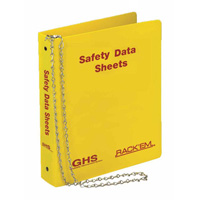
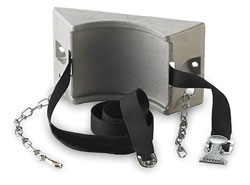
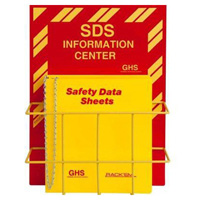
 Employer B
Employer B 